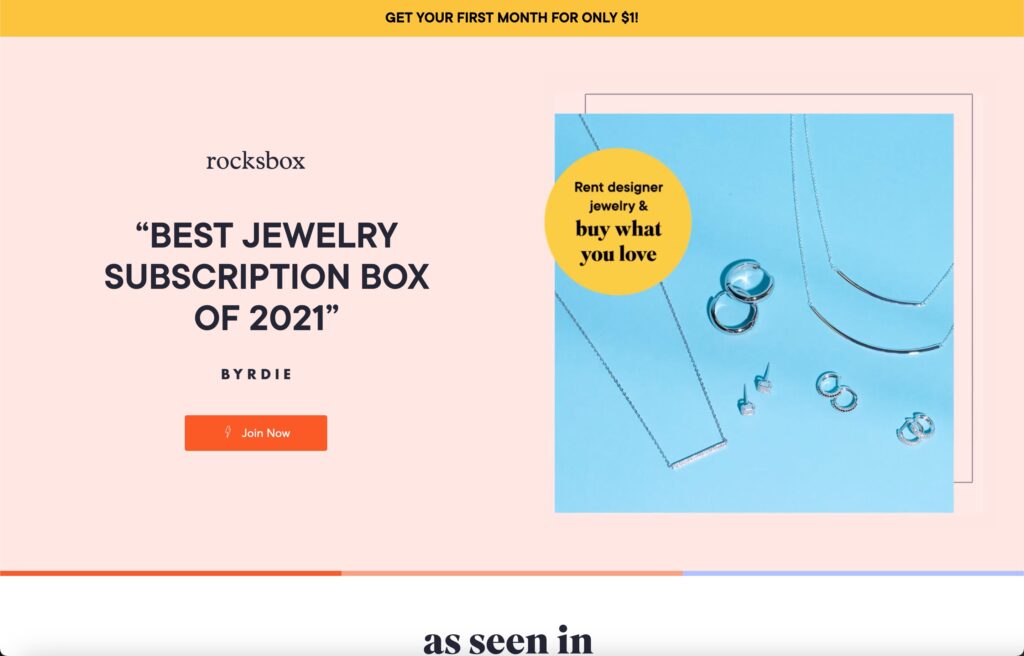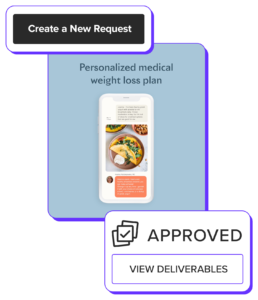If you’re running the same ad across every platform, you’re doing it wrong. TikTok, Instagram, YouTube, and Reddit aren’t interchangeable—they each have their own audience behaviors, content styles, and rules of engagement. A video that crushes it on Instagram might flop on TikTok. A Reddit post that sparks discussion might fall flat on YouTube.
One-size-fits-all doesn’t work anymore. If you want better results without burning through your ad budget, you need to tailor your creative, format, and messaging to match each platform’s ecosystem.
In this guide, we’ll break down what works (and what doesn’t) across TikTok, Instagram, YouTube, and Reddit—so your ads get seen, clicked, and convert.
What Happens When You Copy-Paste Your Ads
Here’s what actually happens when you copy-paste creative across platforms:
- Your click-through rate (CTR) tanks—often dropping by 30–60% compared to platform-native creatives.
- Cost-per-click (CPC) rises, as algorithms deprioritize low-engagement content.
- Engagement rates plummet, especially when users recognize your ad as “out of place.”
- And worst of all, your return on ad spend (ROAS) drops, because you’re paying more to reach users who don’t care.
One-size-fits-all ads don’t convert. TikTok users expect authenticity and fast hooks. Instagram rewards polish and visual storytelling. YouTube gives you room to dive deep, but only if you earn attention in the first six seconds. Reddit? If your ad feels like an ad, you’re done.
Today, we’re going platform by platform to show you how to tailor your ads for real results.
TikTok: Speed, Authenticity, And Native Energy
TikTok isn’t built for polished, overproduced ads. It’s a platform built on trends, sounds, fast scrolls, and realness. Your creative needs to feel like content, not a commercial.
Here’s how to win on TikTok:
- Hook within the first 1–2 seconds. TikTok users scroll fast. If your ad doesn’t immediately capture attention with movement, text, or intrigue, it’s getting skipped.
- Use platform-native editing styles. Vertical video. On-screen captions. Green screen. Jump cuts. Trendy audio. TikTok has its own language—speak it or get ignored.
- Keep it short and tight. Even though TikTok allows up to 60 seconds, the sweet spot is 9–15 seconds. Get in, get your point across, and get out.
- It looks like UGC. User-generated content outperforms polished brand spots. Use real people, phone-shot content, and unscripted energy.
- Trending audio is your friend. Use popular sounds strategically. TikTok’s algorithm rewards content that feels like it belongs on the For You Page.
- Don’t forget your CTA. Even casual TikTok users respond well to direct calls-to-action, especially if it feels native: “Check this out,” “Tap the link,” “You have to try this.”
Formats like “POV” videos and comment box replies are some of the most native, scroll-stopping tools you can use on TikTok. They instantly make your ad feel like part of the feed instead of an interruption.
Comment boxes are simple and native, and will keep users engaged (because yes, they drive attention not only to the creative itself, but also to the comment section, so your video view time will increase). Let’s check some examples:
Instagram: Storytelling That Sells
Instagram might live under the same Meta roof as Facebook, but the way users interact with content here is totally different. It’s a place where people expect aesthetics, storytelling, and a curated vibe. That doesn’t mean your ad has to be high-budget, but it does need to look intentional.
Unlike TikTok, where raw and messy can win, Instagram rewards a little more visual polish and narrative structure. If your creative doesn’t look good or feel like it belongs in someone’s feed or stories, it’s getting scrolled past.
It’s about ✨being aesthetic✨ at some point. Your ad doesn’t have to look like an ad, but it has to match a certain aesthetic.
How to make your ads work on Instagram:
- Prioritize high-quality visuals. Bright, clean, well-composed images and videos consistently perform better. Even UGC should be thoughtfully framed.
- Use Reels and Stories—don’t just rely on static feed posts. Reels are Instagram’s fastest-growing format, and Stories allow you to stay top-of-mind without overwhelming.
- Text matters. Many users scroll with sound off, so use captions, subtitles, or short on-screen text to deliver your message quickly.
- Lean into narrative. Instagram loves mini-stories—before & after transformations, problem/solution setups, and “here’s what happened” formats.
- Add interactive elements in Stories. Polls, sliders, and questions increase engagement and help lower CPM.
Instagram is less about shock-and-scroll and more about stopping users with beauty, relatability, or emotion. You want your ad to feel like something someone would save, share, or screenshot—not just swipe past.
Bonus: Instagram is also a testing playground.
Because Instagram’s feed, Reels, and Stories all offer different placements, you can test creative formats without leaving the platform. Use this to your advantage—sometimes the same message just needs a new layout to land.
This example features high-quality footage paired with testimonials. The use of emojis is key to making the ad feel native.
YouTube: Storytelling, Credibility, And The Power of The First 5 Seconds
YouTube is where people go to watch, not scroll. That gives you more time to tell a story, explain a product, or build trust. But there’s a catch: you have 6 seconds before viewers can hit “Skip.” If you don’t hook them immediately, everything that comes after doesn’t matter.
Unlike TikTok or Instagram, YouTube users are more open to longer content, as long as it’s relevant, informative, or entertaining. This makes it a great fit for brands that need a little more room to explain what they do, especially in science, health, tech, or education.
YouTube ad tips that actually work:
- Open strong. Lead with tension, a bold statement, a surprising visual, or a question that makes the viewer want to stick around.
- Tell a story. Structure matters. Start with the problem, then build toward your solution. Even product-focused ads can feel like mini-documentaries or testimonials.
- Educate or entertain. Don’t just sell, teach. If you’re in a technical field, simplify the message and deliver value fast. Remember that DIY and tutorials are still the number one content on YouTube.
- Use subtitles. Not everyone watches with sound, especially on mobile. Clean, easy-to-read captions keep people engaged. Bonus points if your subtitles are engaging with the use of memes or emojis.
- YouTube Shorts? Different game. If you’re using Shorts, go back to a TikTok-style strategy: fast hooks, trends, and native vibes.
On YouTube, people give you their attention only if you earn it. That means no fluff, no generic hooks, and no trying to “go viral.” Focus on clarity, story, and trust and you’ll convert more than just views.
Here is an example:
Keep in mind that the ideal length for YouTube ads is between 30 seconds and 1 minute. This video runs just under a minute and presents three common myths about supplements in an engaging way. It’s informative and holds attention, positioning a specific supplement as the solution that challenges each of the myths mentioned.
This one example, although it’s very fast-paced, is great for YouTube since it seems pretty native by showing a tutorial.
Reddit: TIL, AMA and More.
Reddit is a different beast. It’s not about flashy visuals or viral sounds—it’s about value, honesty, and context. Users here are highly skeptical of anything that smells like a traditional ad, and they won’t hesitate to call it out. If your content feels out of place, it’ll get downvoted, ignored, or torn apart in the comments.
But when it’s done right? Reddit ads can spark real conversations, drive thoughtful engagement, and generate qualified traffic, especially if you’re targeting niche communities.
Hear us out: if you’re not advertising on Reddit yet, you’re leaving a serious opportunity on the table. Cost-per-click (CPC) is often significantly lower than Meta and TikTok, and the platform is a goldmine for brands in tech, gaming, wellness, finance, and other passion-driven niches. Reddit isn’t for everyone, but if your audience is there, the potential ROI is huge.
How to survive (and thrive) with Reddit ads:
- Look like a post, not an ad. The most effective Reddit ads mimic organic posts; longer copy, casual tone, no hard sell. Think of it as joining a discussion, not making a pitch.
- Use subreddit targeting. Don’t just blast your ad sitewide—zero in on specific communities where your product solves a relevant problem.
- Add value first. Lead with insights, tips, or a personal story. Then introduce your product as the natural solution.
- Be transparent. It’s okay to say “I work with this brand” or “We made this”—Redditors appreciate honesty over slick marketing.
- Test with text-based ads. Visuals can work, but long-form text posts that read like genuine contributions often perform better.
- Use Reddit formats. From free-form ads to AMA (ask me anything), there are plenty of things you can do to make your ad look native. Try starting with AMA or TIL (Today I learned) in your ads to catch attention from the beginning.

Let’s check out this example: although it’s originally Twitter-native, the format translates well to Reddit. Why? Because it leans on the same strengths—text-driven storytelling, a casual tone, and content that sparks discussion. It doesn’t feel like an ad, it feels like someone sharing an insight or starting a conversation—and that’s exactly the kind of content Reddit users engage with.
Final Thoughts: Tailor or Tank
Spraying the same ad across every platform isn’t just lazy—it’s expensive. Audiences on TikTok, Instagram, YouTube, and Reddit don’t just want different content—they expect it. And when your ads don’t meet those expectations, you lose clicks, waste budget, and miss real opportunities to connect.
The fix? Tailor your creative to the platform.
- On TikTok, be quick, raw, and trend-savvy.
- On Instagram, lead with visuals and narrative polish.
- On YouTube, earn attention with storytelling and depth.
- On Reddit, ditch the pitch and speak like a real person.
The truth is, you don’t need bigger budgets or viral stunts. You just need to respect the format, the culture, and the audience. Once you do that, performance improves, and wasted ad spend disappears.
Tailor Your Ads With Primer
We now offer an on-demand service that helps you concept, plan, source, and produce UGC video ads that resonate with your audience and drive results. Let us bring your brand’s vision to life with authentic, high-performing content.
Your Growth Marketing Team: Partnering with Primer means we take care of everything—strategy and planning, production, reporting, and optional media buying—to achieve your growth objectives. You can focus on your business while we deliver the results.
Creative On-Demand: Access a subscription-based marketing creative platform to request UGC, videos, images, and landing pages crafted by top marketing creative strategists and designers who understand what drives conversions.
Reaching innovators and early adopters is a critical step in any successful advertising strategy. These audiences aren’t just looking for new products—they’re actively seeking solutions to their problems. But their expectations are high, and generic messaging won’t cut it. To win them over, you need ads that address their pain points and highlight your product’s unique advantages.
In this blog, we’ll explore how to structure paid ads for innovators and early adopters, introduce two video frameworks designed specifically for this market, and highlight the top platforms for advertising in 2025.
Understanding Innovators And Early Adopters
Stages of Technology Adoption
The technology adoption lifecycle splits consumers into five groups: innovators, early adopters, early majority, late majority, and laggards. Innovators and early adopters are the first to embrace new technologies or products, accounting for about 16% of the market.
- Innovators: Risk-tolerant, curious, and eager to experiment with groundbreaking ideas.
- Early Adopters: More pragmatic but still adventurous, they value solutions that align with their lifestyle and solve pressing problems effectively.

However, when we talk about Innovators and Early Adopters, we’re not just referring to tech enthusiasts. We’re talking about anyone who embraces innovation in any category —the first to try a new skincare product and leave a review, those constantly seeking the latest fashion trends to update their wardrobe, and so on.
Advertising to Innovators And Early Adopters
To appeal to these groups:
- Focus on Differentiation: Highlight how your product or service is superior to existing solutions.
- Emphasize Problem-Solving: Show you understand their pain points and offer a transformative solution.
- Leverage FOMO: Innovators and early adopters love being part of something exclusive and new.
- Provide Evidence: Testimonials, case studies, and data resonate with these audiences.
For these consumer segments, video ads are a compelling format to deliver high-impact messaging while capturing attention. Let’s dive into two frameworks perfect for engaging problem-aware audiences at this stage.
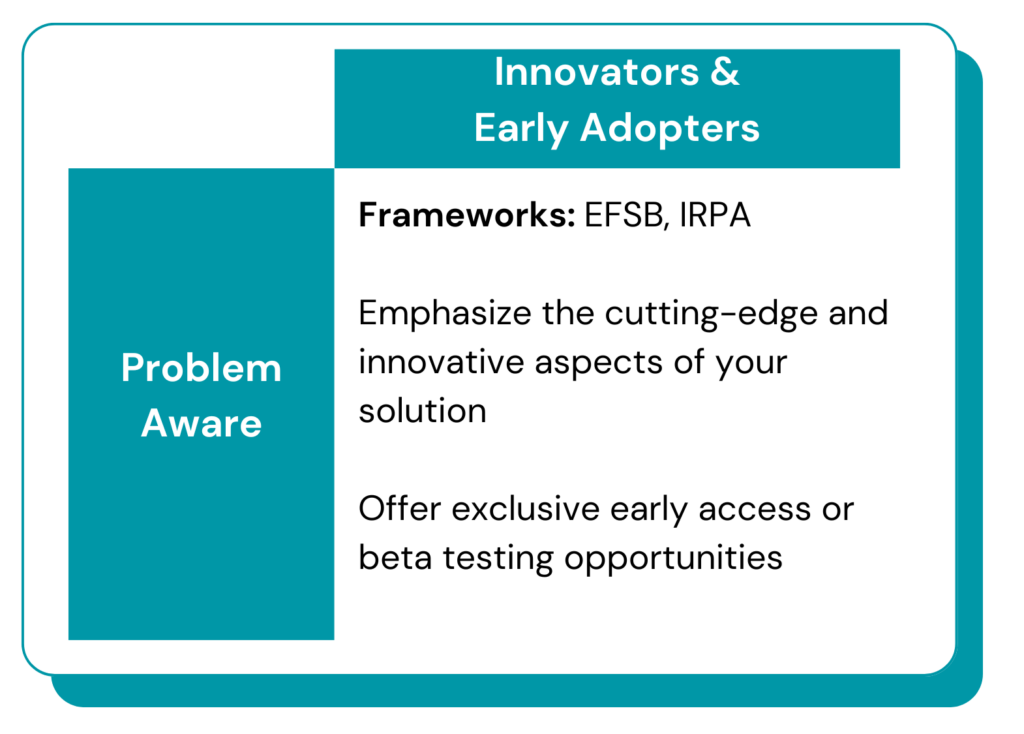
1. EFSB (Enemy – Failed Solution – Benefits)
This framework highlights the flaws in other solutions and positions your product as the superior choice.
- Enemy: Identify and describe the “enemy,” which could be a common problem, misconception, or ineffective solution that your target audience faces. This could be the challenges of producing quality ad creatives or the frustrations of managing multiple marketing channels effectively.
- Failed Solution: Discuss the typical solutions that have failed to adequately address this enemy. Highlight the limitations or frustrations these solutions introduce, making it clear why they aren’t sufficient. This creates context for why a new approach is needed.
- Benefits: Finally, present your product as the hero in this narrative. Outline the benefits and unique features that your offering provides, demonstrating how it effectively resolves the pain points associated with the enemy and the previous failed solutions. Emphasize the transformative results that users can expect by choosing your product.
Why it Works: Innovators and Early Adopters are often drawn to narratives that challenge conventional wisdom. By positioning your product as a transformative hero that delivers distinct benefits, you create a compelling case that aligns with their aspirations for cutting-edge solutions. This approach not only captures their attention. It also fosters a sense of belonging to a community that values innovation and improvement.
Example: Losing your memories is a nightmare for anyone (enemy). That’s why you store them as photos and videos, but if a tragedy like a flood or fire occurs, you could lose them (failed solution). That’s why we introduce a memory digitizer as your solution—by digitizing your media, your memories will be safe forever (benefit).
Let’s see this framework in action:
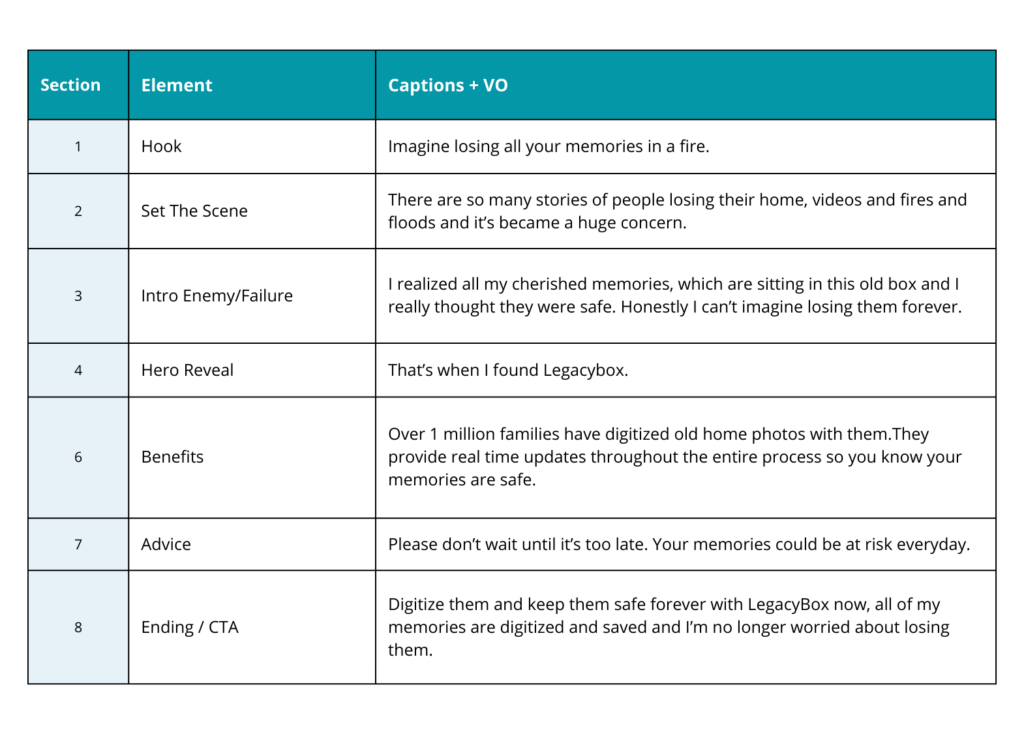
2. IRPA (Imagine – Realize – Prove – Act)
This framework guides potential customers through a journey where they first imagine their desired outcome, helping them visualize the benefits of a solution.
- Imagine: Encourage the audience to visualize the benefits and outcomes they desire from using the product.
- Realize: Help them understand how the product can address their specific needs and challenges effectively.
- Prove: Provide evidence, such as testimonials or case studies, to validate the product’s effectiveness and reliability.
- Act: Prompt the audience to take action, whether it’s signing up, making a purchase, or trying the service.
IRPA also works exceptionally well for retargeting campaigns by helping prospects who have already considered your product envision their problems being solved and building credibility with proof.
Why it Works: This framework works great for early adopters and innovators because it aligns with their mindset and decision-making process.
Example: In this case, we see how the “Imagine” refers to an understanding of why other major brands love Wantable. It then goes on to explain how this service makes their lives easier (realize) and, through social proof, both “proves” and “acts” at the same time.
BONUS: Where to Find Innovators And Early Adopters
As we all know, Innovators and Early Adopters are the first ones to try something new. That’s why they’re constantly searching for the newest solution to their problem but where can you find them?
You’ll often find them on platforms that cater to discovery, trends, and community engagement. Here are three of the best platforms to advertise to Innovators and Early Adopters in 2025:
TikTok
There is no doubt that TikTok is first place when it comes to finding Innovators and Early Adopters.
TikTok’s blend of short-form, high-engagement content and algorithm-driven personalization continues to make it a powerhouse for advertisers. Its focus on creativity and UGC aligns perfectly with consumer preferences in 2025.
Key Opportunities:
- Shoppable Content: In-app shopping integrations make it seamless for users to purchase directly from ads.
- TikTok Spark Ads: Allow brands to amplify organic UGC, building trust and boosting reach.
- AI-Enhanced Targeting: TikTok’s advancements in predictive audience modeling improve ad performance.
Fashion, beauty, health & wellness, and lifestyle brands perform especially well due to the platform’s visually-driven nature.
Check out this UGC example: strong hook, trendy music and an innovative product (tabs that you can take anywhere instead of normal superfoods). This example is looking for Early Adopters that want to try out those Superfoods Tabs.
Meta
Despite growing competition, Meta platforms remain critical for mass-market reach. With advanced audience segmentation and ad formats ranging from carousel ads to Reels, Meta offers a versatile toolkit for targeting problem-aware audiences.
Key Opportunities:
- Advanced AI-powered targeting for precision in reaching specific audiences.
- Engaging ad formats like reels, stories, and carousel ads to showcase products visually.
- Improved click-to-message campaigns for direct customer interaction.
YouTube
YouTube remains a leader for video content with over 2 billion monthly active users. Its diversification into Shorts (competing with TikTok) and live-streaming makes it a versatile advertising platform for brands targeting both short-form and long-form content consumers.
Key Opportunities:
- YouTube Shorts Ads: Tapping into the TikTok-style short video trend with massive reach.
- In-Stream Video Ads: Mid-roll and pre-roll ads remain effective for storytelling.
- Creator Partnerships: Influencer marketing continues to thrive on YouTube, with creators offering authentic integrations.
E-commerce, tech, education, and entertainment brands benefit from YouTube’s ability to educate, entertain, and convert users.
Reddit advertising has been experiencing exponential growth, earning its place on this list as a bonus platform for reaching innovators and early adopters. Why? Reddit’s niche communities make it an ideal platform to connect with innovators in specific interest areas.
Key Opportunities:
- Targeting by subreddit to ensure ads are shown to highly relevant, engaged audiences.
- Sponsored posts and discussions for authentic, conversational ad experiences.
- AMA (Ask Me Anything) sessions to build trust and credibility for new products.
Tech & Gadgets, Gaming, Health & Wellness, Finances… Those are just a few niches that are seeing Reddit as a blue ocean for advertising opportunities.
Get Video Ads With These Frameworks Crafted By Growth Experts
In the competitive realm of DTC marketing, these frameworks serve as your secret arsenal for engaging even the most discerning and informed audiences. By mastering and utilizing EFSB and IRPA, you’re not merely selling a product—you’re creating captivating stories that resonate with your audience’s needs and aspirations.
Your Growth Marketing Team: Partnering with Primer means we take care of everything—strategy and planning, creative production, reporting, and optional media buying—to achieve your growth objectives. You focus on your business while we deliver the results.
Creative On-Demand: Access a subscription-based marketing creative platform to request UGC, video ads, images, and landing pages crafted by top marketing creative strategists and designers who understand what drives conversions.
2024 has been an incredible year for digital marketing, with brands embracing bold creative strategies to stand out in an ever-evolving landscape. At Primer, we’ve had the privilege of working with some amazing partners, crafting video ads that didn’t just capture attention but delivered real results.
From breakthrough product launches to campaigns that sparked emotional connections, our top 10 video ads of the year highlight what’s possible when creativity meets strategy. These ads represent diverse industries, unique approaches, and lessons that every marketer can apply.
So, whether you’re looking for inspiration, insights, or just curious to see what made the cut, Primer Wrapped 2024 has everything you need to step into the new year with confidence. Let’s explore the creative winners that defined the year.
Why Our Creatives Are Winners
Primer’s creatives are winners because we’ve cracked the secret formula for success.
The first and most crucial step in structuring your video ad is understanding your audience. By doing so, you grasp their sophistication and awareness levels. We’ve done the hard work for you by defining frameworks tailored to each level.
We combine this understanding with strong hooks that grab attention immediately, user-generated content (UGC) that builds trust and relatability, and compelling CTAs that drive action effectively. Every element of our creatives is designed to engage, resonate, and convert.
Additionally, our testing methodology allows us to detect winning ads quickly. By continuously analyzing performance and optimizing creatives, we scale the most effective ones to maximize results.
This year alone, we’ve generated over 800+ winning ads for our partners, consistently driving exceptional outcomes and setting new benchmarks for ad performance.
Let’s dive into some of our top-performing ad creatives and explain why they are winners.
Vs. Alternatives
This template is one of our favorites. It works especially well when you’re facing stiff competition or when potential customers are comparing multiple options.
By clearly showcasing the benefits of your product versus alternatives, it helps position your brand as the superior choice.
Let’s check some examples.
Why is this a winner?
- This video starts with a strong hook: POV is a bold statement that speaks about user experience. In this case, it tells me that another product doesn’t work.
- There is a strong comparison between the alternative and the product.
- Leads with benefits. And also highlights ingredients as a benefit, that’s key for the health + wellness industry.
- Finishes with a drive-action CTA.
Now, let’s check out this image ad:
Why is this a winner? Because they are highlighting that their product is the best of the year, in comparison to other alternatives that are cheaper and lower quality.
Ease of Use
This template positions your product as the easiest possible solution to a customer’s problem.
Why is this a winner? This video starts addressing a common problem and quickly moves to a solution (the product) reinforcing why you need it. Then, it shows how easy it is to use… So easy that even kids can use it.
How it Works
For those customers that are unsure about how the product works, this template is perfect. Highlighting how simple it is to use a product and positioning it as the perfect solution, their barriers to purchase are erased.
Check out this example:
Why is this a winner?
- Starts with a question that highlights the problem and then immediately moves to the solution.
- Now, it shows the ingredients. In the Health and Wellness industry, this is very important: the more natural ingredients it has, the more beneficial it is.
- Explains how the product works in three simple steps.
- Finishes with more benefits.
In this video, the pacing is very engaging and the vibrant colors are captivating.
BDQs
Addressing common buyer decision questions (BDQs) is key to convert.
By proactively answering these concerns, you reduce hesitation and build confidence.

This is a perfect example of how BDQs works. Here’s why it’s a winner:
- Starts with a strong hook with native style: she’s telling that she found the perfect gift for her mother’s birthday.
- Addresses the first BDQ: “What is it?” with a complete explanation of what the product is (a device that digitalizes your memories).
- Addresses the second BDQ: “How does it work?” by explaining that you just have to send everything to them and you’ll receive your memories digitized.
- It also showcases real social proof.
Why is this a winner? This video starts by calling out a problem for a specific area and introduces the solution. Then it explains “How It Works” and “Does It Really Work?” by showing a transformation (before/after).
Testimonials
UGC
If you’re not using UGC in 2025, you’re already falling behind. User-generated content (UGC) is essential for creating high-converting video ads because it builds credibility and fosters trust with your audience.
Sometimes, to make a great ad, you just need a good source of UGC. Whether it’s a testimonial, product demo, or everyday use cases, UGC connects with viewers on a personal level and drives engagement like no other format.
Check out how this UGC video turned into a successful ad. The key? When you’re doing UGC, don’t just focus on capturing authentic content, but also on the messaging.
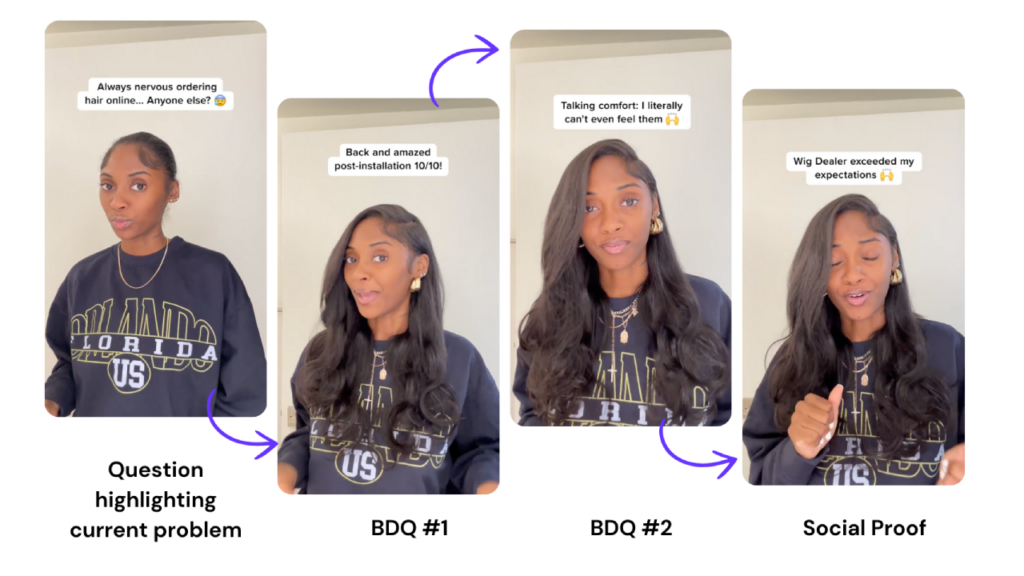
Why is this a winner? In this case, at first she addresses a common problem (ordering online), then you watch her not only speak about the product, she also shows a transformation (before/after) and addresses common buyer decision questions like, “How does it work?” “Is it comfortable?”.
Social Proof
This is a fun way to show social proof by using UGC.
Why is this a winner? Since the beginning, the video is eye-catching. The hook is engaging and it follows with a challenge. He is proving that the product effectively works in real time.
Review
Why is this a winner? This format is 🔥. It’s so simple to use and native. It works especially well for TikTok and it’s just as easy as using a real review and picture of a happy customer.
PRO TIP💥: 4-images/videos layout is always eye-catching, especially if you have a bunch of star products or testimonials (you can show customers using your product) that you want to show.
The Power of GIFs
GIFs have become a powerful tool in modern communication, especially in marketing and branding. Their short, looping format captures attention instantly, making them ideal for delivering quick, impactful messages.
One of the key strengths of GIFs is their ability to bridge the gap between static images and full-length videos. This means that, if it is well done, it’d catch attention earlier than a video.
There is no doubt that they are a powerful, yet underestimated tool. We cracked the code and here is one of our winners:
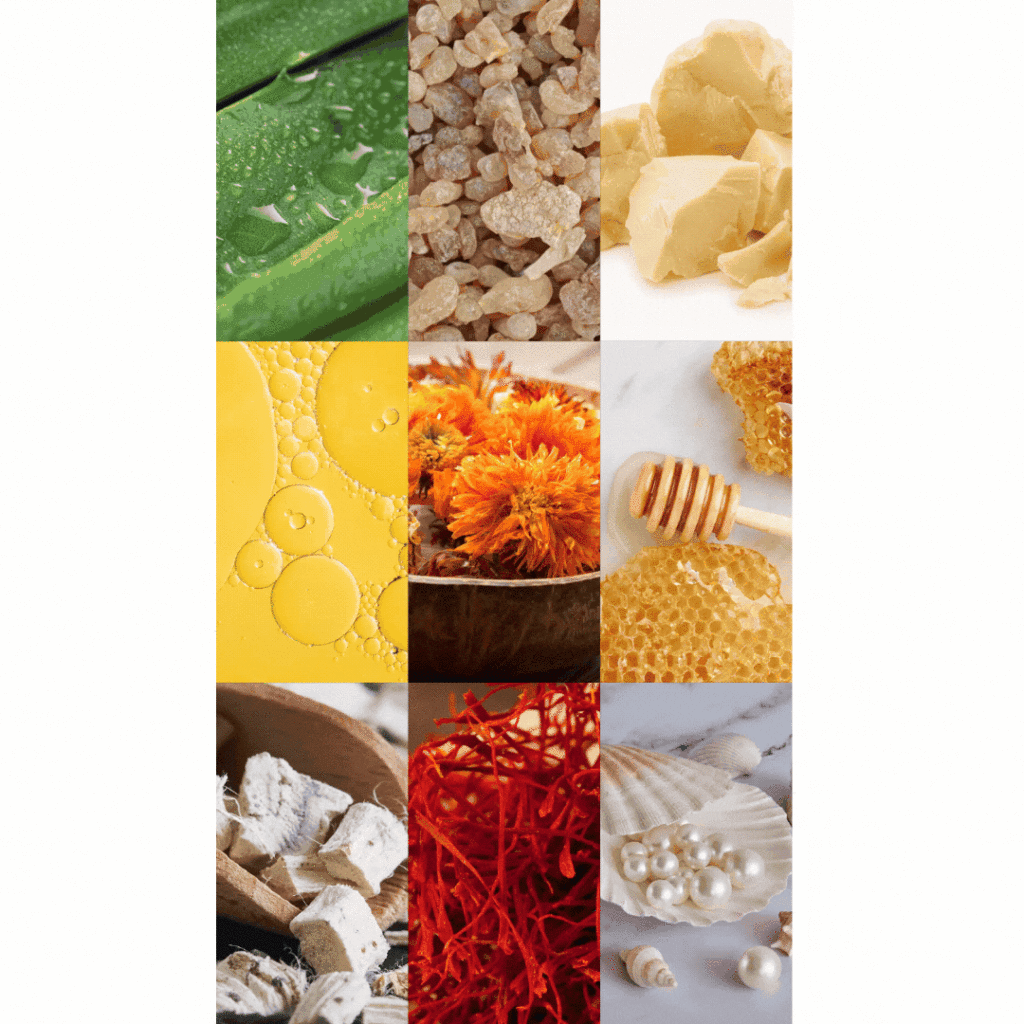
Why is it a winner? It’s direct and goes directly to the point by highlighting the ingredients (which are very important and taken as a benefit in the skincare industry).
From Hook to CTA: Steal Our Formulas
As we wrap up 2024, it’s clear that the top-performing ads share a common thread: they connect with audiences through a perfect blend of strategy and creativity. By understanding the sophistication and awareness levels of the audience, leveraging strong hooks, UGC, and clear CTAs, these ads don’t just communicate—they convert.
Each creative highlighted here offers valuable lessons for marketers. Whether it’s showcasing benefits in a head-to-head comparison, emphasizing ease of use, or addressing customer concerns with a “How It Works” approach, these templates deliver results by solving problems and building trust.
As you step into 2025, take inspiration from these winners. The landscape of digital marketing is always evolving, but the formula remains consistent: know your audience, craft content that resonates, and test relentlessly to scale success. With the right tools and insights, your next big win could be just around the corner. Let’s make 2025 even better!
Get Video Crafted By Growth Experts
From UGC to landing pages, Primer helps create high-converting marketing assets. Trusted by top brands like Jocko Fuel, Sunday and more, we’d love to work with you to grow your revenue, and can partner in whatever way suits you best.
Your Growth Marketing Team: Partnering with Primer means we take care of everything—strategy and planning, creative production, reporting, and optional media buying—to achieve your growth objectives. You focus on your business while we deliver the results.
Creative On-Demand: Access a subscription-based marketing creative platform to request UGC, video ads, images, and landing pages crafted by top marketing creative strategists and designers who understand what drives conversions.
Holiday season is just around the corner, and for most businesses, Black Friday and Cyber Monday (BFCM) are crucial for revenue. However, it doesn’t have to stop there – “fifth quarter” or Q5, beginning after Christmas and stretching into January, holds just as much potential.
To make the most of these peak periods, you need a well-crafted strategy. Here are five powerful tactics to ensure your seasonal growth marketing plan succeeds during both BFCM and Q5.
Why are seasonal campaigns so important?
A structured seasonal marketing campaign is key for brands aiming to boost revenue during Black Friday, Cyber Monday, and Q5.
Seasonal campaigns tap into heightened consumer spending behaviors, capitalizing on a sense of urgency and relevance that naturally comes with holidays and major events. By aligning your offers, messaging, and timing with these moments, you create a perfect storm for increased conversions, customer engagement, and brand visibility.
1. Define your Seasonal Offer
You may already know this, but the first step to prepare for any seasonal event is defining your offer.
Whether it’s Buy One Get One (BOGO), 30% off, or a limited-time product bundle, the offer should appeal directly to your target audience. The key is making your deal both compelling and relevant to the season.
For Halloween, you might offer “spooky” limited editions, while Thanksgiving sales could focus on gifting bundles. During BFCM, aggressive discounts and flash sales often drive the most conversions, but it’s essential to tailor your promotion to your brand’s strengths and customer expectations.
But how do you know if your offer is the right one? Start by looking at past performance. You can also conduct A/B testing to see which offers generate the highest engagement and conversions before the full launch. It’s also important to analyze your customer behavior, preferences, and feedback. This will give you the insights needed to refine your offer and ensure it’s positioned to meet your goals.
However, even if you don’t have a special seasonal offer, you could position your evergreen offers or bundles as a Holiday Sale.
2. Understand your Audience
Holiday season is the time to convert customers, so it’s essential to understand what your audience is seeking during the season.
Start by defining your audience’s level of awareness and sophistication regarding your product or service. Are they already familiar with your brand, or are they new customers? This information is vital for structuring your messaging, offers, and selecting the right creative framework for your growth marketing campaign.
Remember that in Q4 and Q5 the goal is to drive as many sales and revenue as possible. To maximize your budget, focus on audiences who already have a degree of awareness about your product or brand. Most Aware, Product Aware and Solution Aware audiences are the ones you should spot on. And for Q5, you may also want to target Problem Aware audiences, since they are constantly looking to solve a problem and your product may be a solution for them.
Understanding your audience will allow you to tailor your campaign to meet your customers where they are in the buying journey, increasing the chances of conversions.
If you don’t know where to start, check out our Video Ads Frameworks, in which you’ll find a framework for each level of awareness and sophistication.
| Unsophisticated | Moderately Sophisticated | Highly Sophisticated | Innovators & Early Adopters | |
| Unaware | Educate them about the problem | New trends, subtly introduce solutions | Position yourself as the leader | Push disruptive innovation |
| Problem Aware | Define the problem, offer solutions | Show how your solution is different | Provide proof of results | Tie your solution to industry trends |
| Solution Aware | Focus on your unique value | Differentiate from competitors | Prove your product is the best | Position as the most advanced option |
| Product Aware | Simple, direct CTA | Compare your benefits to competitors | Build trust with testimonials | Highlight your product’s innovation |
| Most Aware | Create urgency | Reinforce your brand dominance | Offer exclusive incentives | Appeal to their desire for the newest and best |
3. Prepare High-Impact Creatives
The next step is preparing your creatives.
You have the offer, you know your audience. Now you have to put it all together and create high-impact creatives that will drive conversions.
Remember that there is a lot of competition this time of the year, so your ad creatives need to stand out of the crowd.
Here are some good practices to keep in mind while crafting high-converting creatives:
- Start with a strong hook: the first 3 seconds are crucial for any video because that’s when you capture attention. A strong hook not only grabs attention but sets the tone for the rest of your messages. Looking for fresh, effective hooks? Here are 101 proven hooks that will boost your conversions.
- Match your creatives to the season: align your visuals and messaging with the seasonal event aesthetic. Use relevant colors, imagery, and themes to connect with the holiday. Remember to keep it native to fit in with the rest of the viewer’s timeline. Pro tip: use seasonal emojis for extra attention (🎄🎃🔥)
- Use UGC: incorporating UGC into your campaign adds authenticity and relatability, helping build trust with your audience. When potential customers see real people engaging with your product, it creates social proof and makes your brand more approachable.
- Create a sense of urgency: create a reason to act immediately. Offer a limited-time offer or limited availability of your product, you can also use countdowns to increase the sense of urgency. Try frameworks like FOMO, SUE, SUUB and more, these frameworks emphasize the need to act now.
- Incorporate strong CTAs: regardless of the social platform where you’re running your ad, a CTA should feel organic to the user and native to the social platform and most importantly, it has to drive action to the consumer. Check out these 25 examples of CTAs Primer has developed that are proven to convert.
- Test more, win more: At Primer, we launch new tests every two weeks. This testing cadence gives you enough time to find wins and pause mediocre ads before launching something new. Try out this methodology to improve your creative testing.
Pro tip: Iterate your winners by making different variations. Test different video formats and copy combinations before BFCM to optimize for performance.
🔥Hot tip: Running DPA ads on Meta? Adding masks is one of the easiest ways to find BIG holiday wins. Keep them simple and scannable, preferably paired with a consistent image layout so you know you won’t be blocking any key product elements.
4. Optimize your Landing Page
Now you have a great offer, you’re targeting the right audiences and your creatives are on point but… what if they don’t convert?
Before a big event like BFCM, it’s critical to ensure that your landing page is fully optimized. Even the best offer and creatives won’t deliver results if your landing page doesn’t provide a seamless experience. It’s not just about optimizing technical aspects like loading speed and a frictionless checkout process; your landing page also needs to address your visitors’ questions and emphasize the product’s benefits effectively.
Did you know a landing page has 8 seconds to convert? From the moment your page loads, every element must be crafted to drive conversions quickly and effectively.
Here are some critical elements to consider when building a high-performing landing page.
- Clear & specific headlines written to address core BDQs (buyer decision questions): BDQs are the most essential questions that have to be answered before a purchase can be made and reflect your customers’ wants, needs, motivations, intentions, and decision-making processes.
- Clear CTAs that are above the fold and in each section: guide users toward the desired action, whether that’s making a purchase, signing up, or requesting more information.
- Mobile and desktop optimization: ensure your landing page is designed for both mobile and desktop experiences. Many users will access your site from various devices.
- Easily scannable page with paragraphs with limited text: use concise paragraphs with a maximum of three lines to enhance readability and allow visitors to quickly grasp key points.
- Consistent design elements: maintain uniformity in fonts, colors, sizes, and spacing throughout the page to reinforce brand identity.
- Highlighted Value Propositions: clearly showcase what sets your product apart from alternatives and competitors, whether it’s personalization (e.g., “customized for your lawn”), convenience (e.g., “skip a trip to the doctor”), or innovation (e.g., “AI-generated skincare”).
- Social or press proof: include testimonials, user reviews, or press mentions to build credibility and trust with potential customers.
For seasonal events, remember to be consistent between your landing page and your ads. Do not only follow the same aesthetic, but also deliver on the promises you make in your ads.
5. Don’t Forget About Q5
One of the biggest missed opportunities for brands is overlooking the potential of Q5. The Q5 period, spanning from the day after Christmas through January, is often underestimate but can be just as profitable as Black Friday and Cyber Monday. During Q5, consumers are eager for change. They embrace New Year’s resolutions and self-improvement goals, and looking for ways to upgrade their personal and professional lives.
For brands in niches like health & wellness, fitness, finance, telehealth, B2B, and other sectors that help consumers improve their day-to-day lives, Q5 is a golden opportunity. With ad costs often dropping after the holiday rush, it’s an ideal time to maximize your marketing budget and capture a more engaged audience at a lower CPM.
When CPM drops due to lower competition, you have a unique opportunity to increase your ad visibility without increasing your spend. This translates into more impressions, greater brand awareness, and a higher chance of engaging both potential and current customers.
To make the most of Q5, align your offers with consumers’ renewed focus on their goals. Launch campaigns for post-holiday deals, subscription services, or special bundles that match their aspirations for the new year. For industries outside of these niches, Q5 is still an opportunity. Use it to roll out fresh messaging that speaks to personal growth or professional success, helping consumers see how your product or service can bring positive change.
By incorporating Q5 into your seasonal growth marketing strategy, you can extend the gains of BFCM well into January, capitalizing on this high-conversion, lower-cost period. A strong Q5 strategy transforms what’s often considered a post-holiday slowdown into a critical revenue-driving period, setting your brand up for success into the new year.
Ready for the Holidays?
There’s plenty to do, but thankfully, there’s still plenty of time to do it. If you need any assistance in your holiday planning, that’s what we’re here for. Need some extra hands to get all of your ad creative produced on time?
Your Growth Marketing Team: Partnering with Primer means we take care of everything—strategy and planning, production, reporting, and optional media buying—to achieve your growth objectives. You can focus on your business while we deliver the results.
Creative On-Demand: Access a subscription-based marketing creative platform to request UGC, videos, images, and landing pages crafted by top marketing creative strategists and designers who understand what drives conversions.
In this blog, we will explore five advanced video ads frameworks that empower you to create high converting ads. With these strategies, you’ll effectively communicate to your highly aware prospects that your product is the ideal solution for their needs, compelling them to take action now.
Understanding Your Audience
A highly sophisticated, product aware audience exists in a highly competitive market, where numerous products or services offer similar solutions.
At this level of market sophistication, consumers are no longer just discovering options —they are fully aware of the range of alternatives available. This means they’ve already been exposed to multiple pitches and are familiar with how your product compares to others. The challenge here is standing out in a crowded landscape.
But how can you stand out in a sea full of competitors? In addition to understanding your audience and knowing what they’re looking for, you need a clear message that emphasizes your product’s benefits, builds trust, and demonstrates superiority.
That’s why, at Primer, we’ve developed five advanced video ads frameworks that will help you create compelling ads to capture the attention of these discerning prospects, proving that your product is the perfect fit for their needs and encourages them to hit the “Shop Now” button.
| Framework Finder | Highly Sophisticated |
| Product Aware | Frameworks: TPE, QUEST, FOMO, SUE, HIW Emphasize the advanced features and integrations of your product Provide in-depth case studies, believable positive results, ROI calculators, etc… |
1. TPE: Technical – Practical – Emotional
The TPE Framework is a fresh approach that combines technical details with practical tips and a touch of emotion. It’s a great way to make your videos stand out and capture your audience’s attention.
- Technical: Showcase the product’s features, showing its superior capabilities.
- Practical: Demonstrate the practical applications or use cases
- Emotional: Appeal to the audience’s desires, aspirations, or pain points, building an emotional connection
Why it works: Sophisticated audiences are looking for clear, compelling reasons to choose your product. Features highlight the unique aspects they can’t find elsewhere, while practical use cases show how your product fits seamlessly into their lives. The emotional connection then bridges the gap, appealing to their deeper needs or aspirations.
Example: a fitness brand could begin by showcasing the advanced technology in its equipment (e.g., unique resistance technology). It then shows how the equipment can improve workout efficiency (practical use case), and finishes by connecting with the audience’s desire for a healthier lifestyle (emotional appeal), urging them to take action with a powerful CTA.
| Section | Element | Captions & Stickers | VO | Footage |
| 1 | Hook | |||
| 2 | Technical Features | |||
| 3 | Use Cases | |||
| 4 | Emotional Benefits, Desires, or Feelings | |||
| 6 | Ending / CTA |
2. QUEST: Qualify – Understand – Educate – Stimulate – Transition
The QUEST Framework is your secret weapon to guide your audience from problem to solution, positioning your product as their trusted advisor.
- Qualify: Identify the specific problem or need your audience is facing.
- Understand: Show empathy by acknowledging the audience’s pain points.
- Educate: Introduce your product as the solution and explain how it addresses their concerns.
- Stimulate: Build excitement by demonstrating benefits and results.
- Transition: Create clarity on the next steps and what’s needed to move forward.
Why it works: QUEST is a journey, guiding the audience step by step from identifying their problem to embracing your product as the answer.
By qualifying their specific needs and understanding their problems, you make the audience feel understood. Education on the product’s unique benefits, followed by stimulation through proof and value, builds interest. Finally, the transition offers a smooth push to act, with a clear call to action.
Example: Imagine you’re a skincare brand. Your QUEST ad is for your star product: a serum for hyperpigmentation (qualifying your audience), you show empathy by expressing how frustrating can be to find a product that works (understanding), then you teach your viewers about the formula of the serum (educate) and stimulate interest by showcasing glowing testimonials and before-and-after results (stimulation). To finish, you add a powerful CTA (transition).
| Section | Element | Captions & Stickers | VO | Footage |
| 1 | Hook | |||
| 2 | Qualify | |||
| 3 | Understand | |||
| 4 | Educate | |||
| 5 | Stimulate | |||
| 6 | Transition / CTA |
3. FOMO: Fear of Missing Out
Have you ever felt that intense urge to be at an event with your friends, terrified of missing out? Well, that’s exactly how this framework works.
It leverages that same urgency, pushing your audience to engage before it’s too late and highlighting why your product is essential for staying in the loop.
- Create a feeling of exclusivity or limited-time access.
- Highlight the benefits that others are experiencing from your offering.
- Suggest a potential regret: if you don’t act now, you will miss it!
Why it works: FOMO works by creating a sense of exclusivity and urgency, appealing to sophisticated buyers who want to stay on top of trends and avoid missing valuable opportunities.
Example: A popular music festival announcing its lineup for an upcoming event. They could emphasize how quickly tickets are selling out, showcase enthusiastic social media posts from fans who have already purchased theirs, show previous events and create an exciting sense of urgency that makes potential attendees think, “I can’t miss this experience!”
| Section | Element | Captions & Stickers | VO | Footage |
| 1 | Hook | |||
| 2 | Trend or Popularity Statement | |||
| 3 | Showcase Demand | |||
| 4 | Product Intro | |||
| 5 | USP | |||
| 6 | Urgency | |||
| 7 | Ending / CTA |
4. SUE: Scarcity – Urgency – Exclusivity
This framework motivates consumers to act quickly and feel privileged to be part of an exclusive offer.
- Scarcity: Show limited availability to encourage immediate action.
- Urgency: Create a sense of urgency through deadlines, countdown timers, or “limited-time offers.”
- Exclusivity: Make the offer feel special and unique, something others may not have access to.
Why it works: This framework effectively taps into the sophisticated audience’s desire for unique and valuable experiences, inspiring them to take action.
Example: A luxury watches brand is offering a limited edition watch for Christmas (scarcity). The watches will be available for pre-order for a limited time (urgency). The watch will feature exclusive features that will not be available in future models (exclusivity).
| Section | Element | Caption & Stickers | VO | Footage |
| 1 | Hook | |||
| 2 | Scarcity | |||
| 3 | Urgency | |||
| 4 | Exclusivity | |||
| 5 | Ending / CTA |
5. HIW: How It Works
This framework motivates consumers to act quickly and feel privileged to be part of an exclusive offer.
- Use a Hook with an intriguing fact or question
- Walk the audience through how the product works, highlighting key benefits at each stage.
- Show the product in action to reinforce your points.
Why it works: The HIW framework works because it provides clear, detailed insight into how the product functions and why it is superior. Product aware, sophisticated audiences appreciate a logical, fact-based explanation and value proof of functionality.
Example: in this case, the video starts with a question, followed by a step-by-step explanation of how to use the product while demonstrating its use. To finish, there is social proof showing how much people love the product.

| Section | Element | Caption and Stickers | VO | Footage |
| 1 | Hook | |||
| 2 | Product Intro | |||
| 3 | Explanation / Benefits | |||
| 4 | Demo | |||
| 5 | Ending / CTA |
Time to Make a Move
Each of these video ads frameworks acknowledges the depth of awareness and sophistication in the audience by providing logical reasoning, building trust through social proof, and offering emotional or psychological triggers to prompt immediate action.
The effectiveness of these strategies lies not only in their structure, but also in your implementation. Be authentic, deliver genuine value, and always appreciate your audience’s intelligence. Test your creatives as much as you can to get even better results.
Start implementing these frameworks today to watch your conversions grow.
Get Video Ads with These Frameworks Crafted By Growth Experts
In the competitive realm of DTC marketing, these video ads frameworks serve as your secret arsenal for engaging even the most discerning and informed audiences. By mastering and utilizing TPE, QUEST, FOMO, SUE, and HIW, you’re not merely selling a product—you’re creating captivating stories that resonate with your audience’s needs and aspirations.
Your Growth Marketing Team: Partnering with Primer means we take care of everything—strategy and planning, production, reporting, and optional media buying—to achieve your growth objectives. You can focus on your business while we deliver the results.
Creative On-Demand: Access a subscription-based marketing creative platform to request UGC, videos, images, and landing pages crafted by top marketing creative strategists and designers who understand what drives conversions.


Your landing page is the first intentional point of contact for your customers. Your ad templates led them to your landing page, and now it’s time to generate conversions and make a sale.
Is your landing page effective and provides your target audience with the best possible experience? The only way to know is to test it, but you can be more confident and avoid wasting time by ensuring you have the necessary elements of a winning landing page.
Elements of High-Conversion Landing Pages
The best landing pages focus on the customer’s journey and guide them toward conversion. In other words, consider what your audience needs, from scannable copy to custom-made visuals emphasizing your brand’s product or service, and make sure they can access it on whatever device they’re using.
Landing Page Templates
Keep your landing page template in mind. These variations address different things in their headers, and the remaining structure depends on the goal. For example:
- BDQs (Buyer Decision Questions) – Address the key questions your customer needs answered before they are confident buying. Include concise answers, stats and proof, and include unique selling points mixed in with your answers. I.e if you were buying a car, you would need to know the MPG, the # of doors and the paint color.
- Listicle – In a sequence, specify why your product will solve problems or what makes it unique. Using the listed examples as proof, promise to satisfy your future customers.
- Vs. Alternative – Position your product as the best possible solution to a customer’s problem, comparing directly to traditional solutions, your direct competitors, or doing nothing. You should provide meaningful comparisons vs alternatives, trustworthy testimonials, and a breakdown of why your product is the best solution.
- Sales Questions – Rather than you reminding them their problem or goal, ask a question that causes your target customer to recall their problem on their own. Continue asking Qs so that they remember how urgently they want to solve it, and how they’ll feel when they solve it. Once they’ve reminded themselves of what they want, they will be excited to follow through with your call to action (CTA) right away.
- Personalized – Simply state what makes your product different. Get the press talking about how great your product is, demonstrate how easy it is to get the product, share customer testimonials, add before and after pictures, and show what makes the product special.
- Press/Testimonial – Start with a quote validating your product’s selling points and show quotes from press outlets, customers, and UGC examples. Tell customers how easy it is to reach similar results and guarantee the product fits their needs.
Download Primer’s favorite landing page templates here!
Landing Page Key Elements
Run through this at-a-glance checklist to make sure your landing page has all of the essential elements that set it up for success.
- Most Crucial: Information that addresses your audience’s core Buyer Decisions Questions (BDQs)
- Differentiation from potential alternatives and competitors (position directly vs the alternatives)
- A focused and direct headline addressing your target audience according to your landing page template
- Clear calls to action (CTAs) both above the fold and in each section
- Easily scannable copy with no more than 3 lines per paragraph
- Responsive design — optimized for mobile and desktop use
- Uncluttered, consistent design elements throughout
Browse our landing page gallery to glimpse this checklist in action.
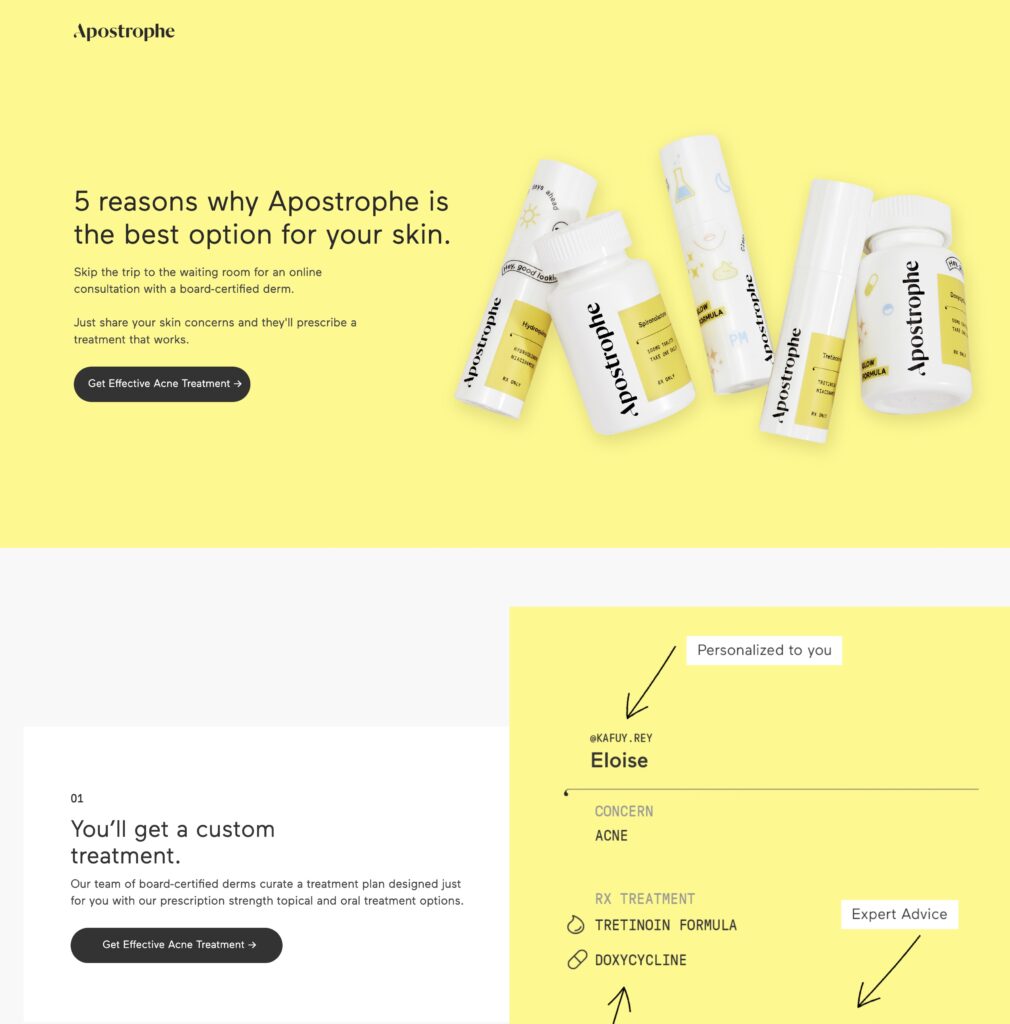
Strategizing Variety
Variations
Landing page wins fatigue much more slowly, so you get more bang for your investment in landing page creation. Once you find a win, you can easily scale that win by swapping the hero section headlines, body copy, images and videos (as well as within other sections) to improve results. This will give you a way to test a specific message or feature within the page without creating an entirely new page.
Test With Primer
Whether you’re looking for someone to deliver ready-to-launch landing pages designed to convert or you need a partner to develop and manage your landing page testing strategy, Primer can help.
You can access high-converting landing pages, images and videos with Primer On-Demand, Primer’s trusted online platform.
Interested in learning more about how Primer can help you create video ads and landing pages that convert? Schedule a free consultation today.
So you’re in the market for an online platform to get ad creative designed for you. That’s what Primer is for. But naturally, there are similar options out there that do things a bit differently, serve a different type of company, and/or have a different price point. Let’s dig into how Primer On-Demand differs from one major competitor: No Limit Creatives.
Ad Creative Platform Comparison
What are they and what are they for?
Primer On-Demand is a platform that allows you to get high-quality ad creative designed for conversion and produced by our creative team in 2 to 4 business days.
It is for building a continuous pipeline of conversion-focused creative for paid social ads.
No Limit Creatives is a platform that gives you access to their design team to produce a variety of marketing content in 1-4 business days. They have 4 different plans, but their “Graphic & Video” package is the only one that’s comparable to On-Demand.
Rather than serving a particular niche, it is for getting various types of marketing designs produced as needed.
How Do They Work?
Both work in a similar way:
- Request an unlimited amount of marketing designs directly through an online platform.
- Get paired with the right designer for your unique request.
- Receive your creative back in 1-4 days after it passes a quality assurance check. Request revisions if needed.
There are some differences. When requesting edits, Primer On-Demand provides an easy-to-use review studio within our platform where you can make markings and leave comments in specific places. It makes giving feedback a breeze – much better than only using words over email.
What’s Included?
Primer On-Demand includes:
- Image Ads
- Graphic Design
- Custom Illustrations
- Video Ads
- Videos (image compilations, UGC, etc.)
- Custom Animations
- Fully hosted Landing Pages
What’s not included in Primer On-Demand?:
- General marketing design that is not tied to a specific growth goal
- Creative designed for physical applications (signage, presentations), including:
- Print graphics
- Logos
- Branding
No Limit Creatives includes:
- Digital & Print Graphics
- Custom Illustrations
- Motion Graphics & Video
- Landing Pages
- Logos & Branding
- Amazon Listing Designs
What’s not included in No Limit Creatives?:
- Creative that’s always designed for conversions
Since Primer’s specialty is growth and the biggest growth lever is ad creative, the types of designs we provide are always for the purpose of getting conversions.
Price:
No Limit Creatives: Approximately $949 per month
Since No Limit Creatives serves all marketing creative needs, the lower cost is offset with the lack of specialty. This is good for companies that are okay with having generalist designers rather than growth-focused designers, and want the ease of having a one-stop-shop for their design needs.
Primer On-Demand: $3,400 per month
Serving a different purpose, Primer On-Demand is the premium option for companies focused on generating revenue from high-quality ads produced by specialized graphic designers, video designers, and landing page designers, with an average rating of 4.9/5 stars.
Key Differentiators
No Limit Creatives’ key differentiators are:
- All your marketing design needs in one place, produced by one team
- Lower monthly price
Key differentiators for Primer On-Demand are:
- High-quality ad creative: Only 1.1 rounds of revision on average and 4.9/5 stars
- Conversion-focused ad creative produced by growth marketing designers
Ideal Customers
No Limit Creatives is best:
- if you have a lot of general marketing content needs and not enough graphic designers.
- if you can spend extra time in multiple rounds of revisions since the design team is not specialized in any single type of marketing niche.
- if your priority is ease and convenience amongst all marketing team members and you need all creative to come from one place.
Primer is best:
- If you are prioritizing growth marketing and don’t have enough graphic designers.
- If you’re a time-pressed growth marketer that expects top-notch ad creative on the first round of revisions.
- if your priority is ad creative that’s designed to convert.
The Verdict
So which one is better? It depends on your priority and bandwidth.
Companies that need high-quality, growth-focused creative with fewer revisions should go with Primer On-Demand, whereas companies that have various content needs and more time to spend in review stages may find No Limit Creatives to be the better option.
Ready for More Ad Creative?
Start getting more high-quality ad creative today. Learn more about Primer On-Demand and how to get started here.
What marketer doesn’t like to increase the conversion rate on their ads? It’s what we all want, yet, one of the most important factors in closing the deal is often forgotten: the landing page.
Some companies (ahem, a lot of companies) direct their ads to the homepage. We get it – it’s a hassle to create a landing page for every new campaign. But that consistency is exactly what’s expected from users and, yes, it does result in higher conversions.
While it might take more effort, creating a landing page that’s consistent with your ad is certainly worth your while. Read on to learn why landing pages are so much more effective than homepages in increasing conversions on your ads.
5 reasons why landing pages increase conversion rate on your ads
1. Landing pages carry over the ad experience
Who’s the audience you’re targeting in your ad? Is it Gen Z women? If so, wouldn’t they be a bit confused if they tap on the ad thinking “this is for me” but get directed to a landing page that doesn’t feature any Gen Z women, or worse, features older men? Or maybe you’re targeting puppy owners in your ads. If it leads to a homepage about generic dog food rather than puppy food, you’ve lost ‘em. But personalize the experience from ad to landing page and your customer will feel seen, heard, and much more likely to buy.
The good news? Not everything needs to be the exact same. The ad experience has a few key elements:
- the messaging (or key theme)
- the visuals
- the offer
- the audience
You might be able to get away with mixing and matching landing pages with ads that have a different key theme or message. For example, the ad theme may be testimonials, or it may be “how it works.” These can have the same audience and offer provided in the ad, and direct to the same landing page that features both the testimonials and the “how it works” section. See the ad and landing page below for a great example.
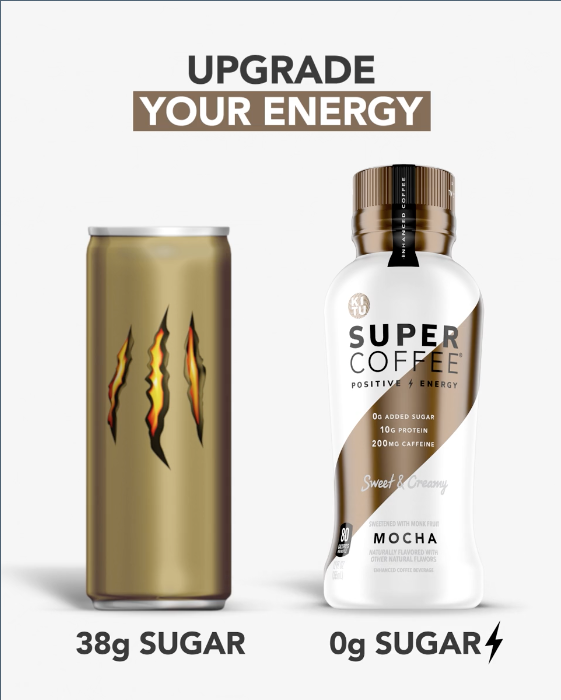 |
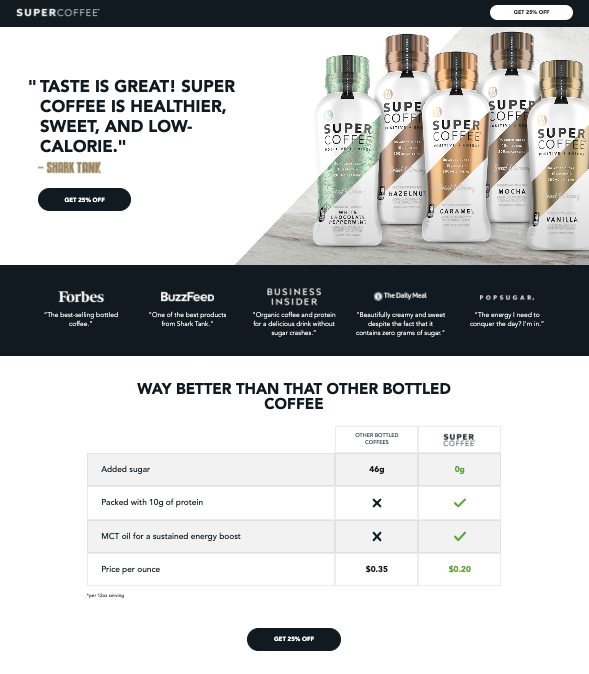 |
The non-negotiable: your landing page must be unique to the audience and the offer. And of course, there should be some consistency in the visuals (that’s just Branding 101).
2. Landing pages answer questions sparked by the ad
While homepages serve a more general audience that aim to cast as wide a net as possible, landing pages answer specific questions that the user will have after they see your ad.
There’s a reason they clicked on that ad and they want to finish the storyline you started. You can’t take them to a different story and expect them to stay interested enough to keep reading.
In a “vs. the competition” ad, for example, the landing page should answer questions about how the product specifically compares to the mentioned competitor. When all their questions are answered, boom, conversion. While you might have this info on your homepage, it will take the user a lot more scrolling to find the info they need, and by the time they reach your comparison chart, they’ve already bounced.
3. Landing pages have a single call to action
Perhaps the biggest thing that makes a landing page a landing page is the one singular purpose it serves. While homepages aim to educate the audience, provide value, and offer loads of different content, landing pages have one single call to action: make a purchase or submit a form.
When you limit the distraction caused by navigation menus, case studies, blog posts, and other links, the user has a much more streamlined pathway to your conversion point. You don’t provide the temptation for them to click away to another area of your site. Instead, you show them exactly what to do. To make it even easier on them, you should add multiple CTA buttons throughout your landing page so that if they’re already convinced, they don’t have to keep scrolling.
See how there’s no navigation on this landing page?
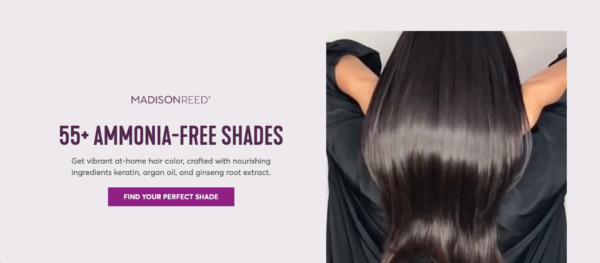
4. Landing pages show personalized social proof
While a homepage might feature rave reviews about your product in general, a landing page can get very specific to your target audience. For example, in a “vs. the competition” ad, the reviews on your landing page can make direct references or comparisons to your competitors, or pain points your competitor didn’t solve that you do. Check out this example from the Super Coffee landing page we saw earlier:
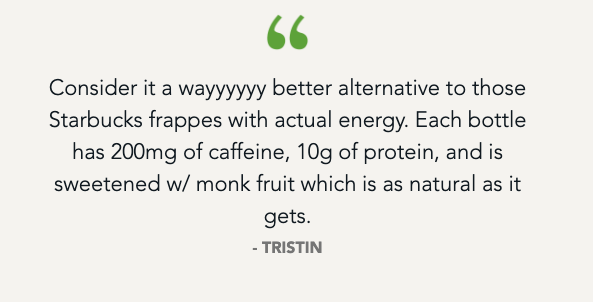
Likewise, you can (and should!) tailor the UGC on the page to the specific audience or product featured in the ad. This personalization provides reliability and trustworthiness that you can’t achieve with just generic UGC and generic reviews. Today, representation matters more than ever. People want to see people who look like them in your ads and on your landing page.
5. Landing page wins tend to last longer than ad wins
You shouldn’t just test your ads. You should also test your landing pages. Test big ideas and iterations, just as you would with your on-platform ad creative, in order to find wins. We’ve found that after testing a few different landing pages and finding wins, those wins last much longer than ad wins. A landing page might be successful for 4-5 months, whereas in-platform ad creative quickly fatigues out and is successful for a much more limited time.
This is reassurance that, while you’ll have to create new ad creative pretty often, you can continue to reap the benefits of strong landing page performance when launching new ads.
Landing pages increase conversion rate and decrease CPA
This is all great, right? But is it actually proven to help you achieve your goals? Of course!
After starting a new campaign and testing dozens of Facebook-friendly, mobile-first landing pages, we found a clear landing page win for our client, Madison Reed. It was a “how it works” style landing page covering the three simple steps of their product. The results:
- It increased click-to-purchase conversions by 54%
- It Increased customer acquisition by 41% when paired with ad creative wins
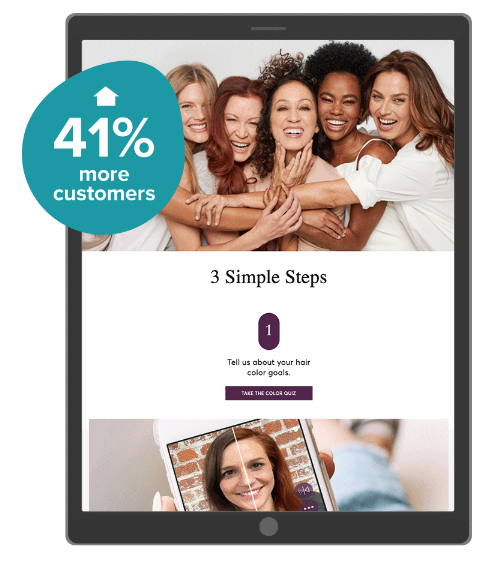
Need another example?
For our client, Otter.ai, we tested and found a winning, quiz-style landing page that increased conversion rate 65%. We also made a landing page specific to their retargeting ads, and therefore, their more middle-of-funnel audience, which lowered retargeting CPA by 43%.
Time to increase CVR on your landing pages
If you’re already using landing pages for your ads, congrats! If not, here are a few tips on how to create landing pages that convert.
Already running landing pages but not seeing those conversions? We can help! Get expertly crafted landing pages with Primer On-Demand or leverage our full-service agency for landing page and ad testing for maximum growth. Book a call with us.
To Primer Friends and Partners:
As marketers, we find ourselves again in uncertain times. The recent tumult of the financial markets, increased inflation, and a long road ahead to economic recovery have many of us reconsidering our marketing strategies.
Sequoia Capital called this a “Crucible Moment” in their recent “Adapting to Endure” presentation. “We must recognize the changing environment and shift our mindset to respond with intention rather than regret.”
At Primer, we have a close eye on these macroeconomic impacts across our entire portfolio of partners – spending $10s of millions across Facebook, TikTok, Snap, Google, Pinterest, YouTube, and more.
We have seen some partners adjust their budgets and others double down. If you’re not sure which changes to implement, you’re not alone. As your partner in growth, we would like to share what we’re seeing in the media marketplace today.
Here’s some good news: it’s encouraging.
Reduced competition is driving low CPAs
The brands that have pulled back are leaving opportunities for those that choose to invest in ads and marketing right now.
The first five months of 2022 were more expensive in paid social than 2021, but that trend has recently reversed.
Blended CPAs across our partners have decreased 45% since January. For the month of July, CPAs are 27% lower than in 2021.
CPAs are the lowest of the year
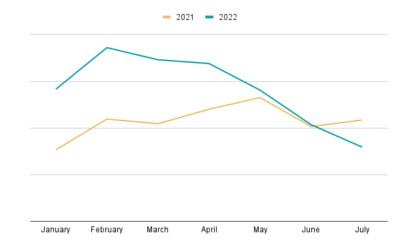
CPMs are also down — 25% lower since January 2022 and 21% down in July, compared to July 2021.
CPMs lower year over year
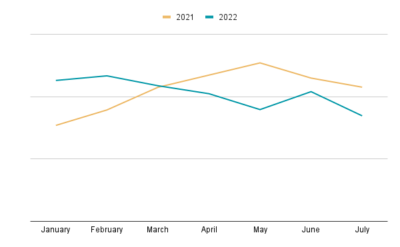
This is a great time to test and learn
These lower costs can make up for any drop in conversion you may be seeing as a result of reduced demand. With lower costs, learnings are more affordable, and you can emerge from this economic downturn with winning ads that are ready to scale when you are.
Our advice is to consistently run tests to find new winners that can be easily scaled when demand returns. You’ll be there for an incredible intersection of cheap CPAs and a spike in demand (similar to the surge in 2020).
Stay agile. Stay connected. You will succeed.
Similar to our advice at the very beginning of the pandemic, we still believe these keys to success will guide you through these times.
- Have empathy for your customers. Show them you care and understand their needs by speaking directly to their most important questions about your product.
- CPAs are the lowest they’ve been since early pandemic days. Utilize opportunity.
- Demand for home delivery and digital experiences has held strong. Acquire a huge generation of lifelong customers who remember you for making their lives easier during tumultuous times.
- UGC is what users are responding to these days. Test native-style ads featuring “real people” showing how they can benefit from your product.
- Stay informed. Stay agile.
We’re here to help
We believe that thoughtful testing, rich ad creative, and intentional investments will lead to growth that will endure these ever-changing times. It worked for our partners through the pandemic, and we’re here to help you through whatever comes our way next.
Whether that’s through full-service, hands-on management of your paid media or by providing high-quality ad creative on-demand, our team is ready to help you find ways to test more and win more.
If you work in advertising, you know that the key to growth is performing lots of ad tests very quickly. But those ad tests wouldn’t be possible without a lot of creative. And that creative wouldn’t exist without the ideas behind them.
Sometimes, those ideas just don’t come quickly. We’ve all been there. So how can you keep the creativity flowing? Well, you open up the creative faucet, of course.
What is the creative faucet?
The creative faucet is a term coined by Julian Shapiro to describe the process of getting out all of your ideas in order to eventually land on a good idea, similar to flushing out the water of a dirty faucet to get to clean water.
Whenever you have to come up with something creative, you open your creative faucet, meaning, you let the ideas start pouring out…even if they’re terrible. In fact, the worse your ideas, the more you need to get them out of your brain and into the world, whether on paper, in a Google doc, in a notes app, through your vocal chords, or just jamming on your instrument.
Once the bad ideas are out, you’ll start to get some okay ideas. Those okay ideas should give you some aha moments that lead to good ideas, and those good ideas will then turn into something great.
The point being – great ideas don’t just happen. They don’t come out of nowhere. They come to fruition once they’re sparked by something that’s only good or okay, or maybe even something bad.
The creative faucet in action
To showcase the creative faucet in action, here’s an example from John Mayer.
In this video, John Mayer picks up his guitar and almost immediately starts brainstorming lyrics. He says that if you don’t start immediately, you’re simply wasting time. “You just keep going until you get something,” he sings to a freestyle melody.
How does the creative faucet apply to marketing?
Whether you’re a designer, a copywriter, a growth marketing manager that needs to write briefs, a content writer, a creative strategist, or anyone that relies on ideas for marketing, you can apply this process immediately in order to help you:
- Get work done faster
- Produce better and more effective creative or creative briefs
- Stay focused on the task at hand
As marketers, our attention is pulled in a million different directions at all times. But when you open the creative faucet, your ideas will wait for no distractions. This means that you’ve got to dedicate time to this process or else a good idea might come and go while you’re busy checking Slack.
In return, you’re able to complete the task faster and in a process you’ll hopefully enjoy much more, with deliverables that are better and more effective. When it’s time for you to get started, make sure to do it the right way, free of distractions.
How to open the creative faucet in marketing
- Block off 90 minutes. Make yourself completely unavailable on calendar, Slack, social media, phone, email, pager, Alexa, kids, knocks on the door, carrier pigeons, everything. It’s just you and your ideas.
- Use the first 10-15 minutes for a rapid brainstorming session. Type out anything that comes to mind, letting your ideas build upon each other.
- Immediately go straight into your deliverable. For a Growth Marketer this might mean step one was brainstorming your ad image copy, and step two is actually writing your ad description copy and/or creative brief.
- If you need to provide any specific formatting, links, or add in images or videos, do this last. This would just be a distraction to your creative faucet.
It’s super important to do this all right away when your ideas are fresh and the creativity is flowing. It will get done way faster without any distractions. Plus, it will actually be fun to get it all done in one go. The longer a project drags on while you switch from project to project and app to app, the more the outcome, your productivity, and your own personal enjoyment suffers.
Creative requires creativity
Creative requires creativity, and when creativity is your day job, it requires dedication to the brainstorming process. Over the course of 1 quarter, we test about 100 visuals and 50-75 copy variations for each of our partners. To test a lot, we have to come up with a lot of ideas.
This has been the tried and true process that helps us come up with ideas worth testing, whether it’s for the big idea tests or small iterative ones. And from those ideas come the wins and the revenue. Check out “What To Test on Your Social Media Ads: Big Ideas vs. Small Iterations.”
Learn more about our growth marketing agency or on-demand creative platform.

